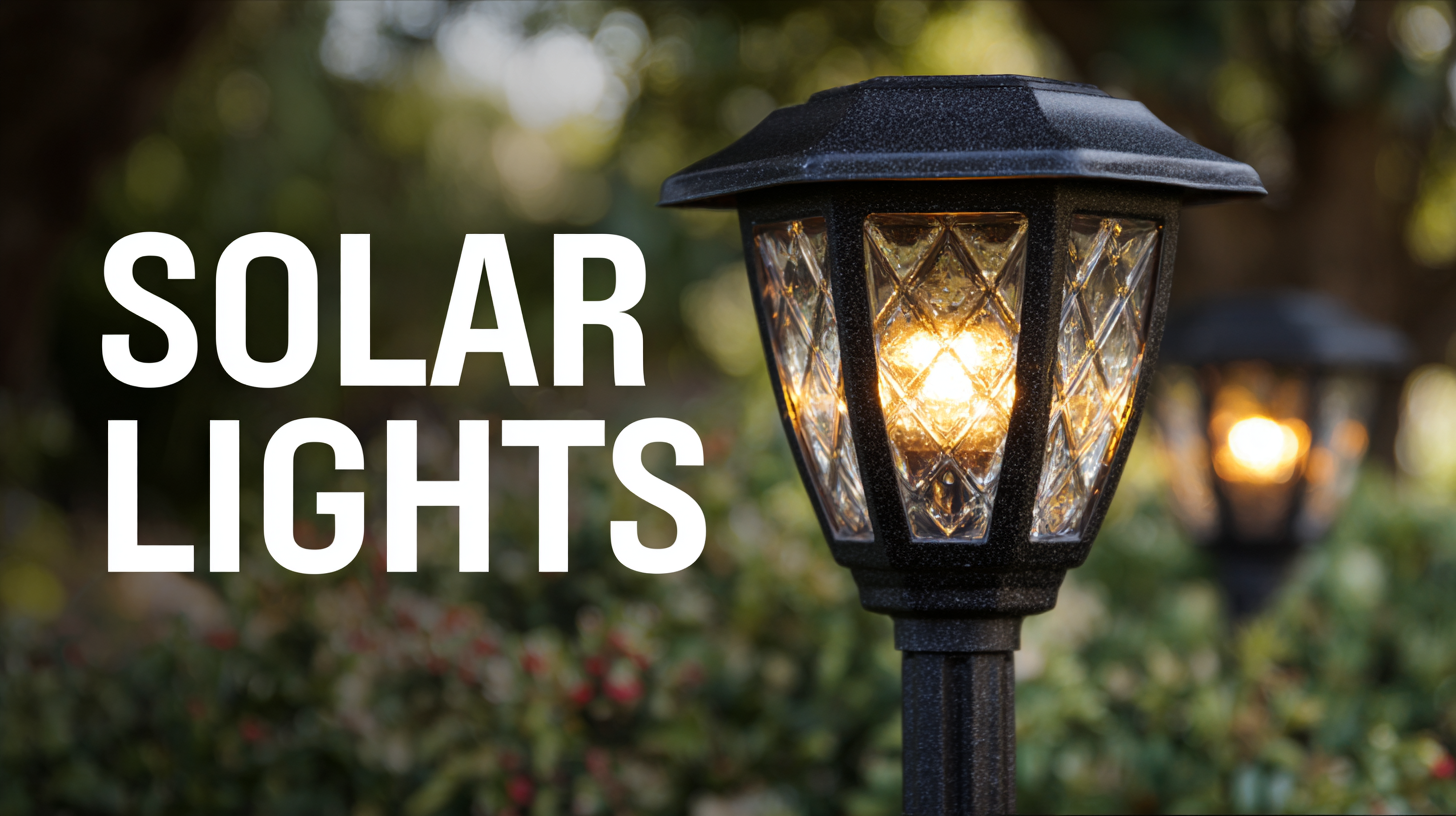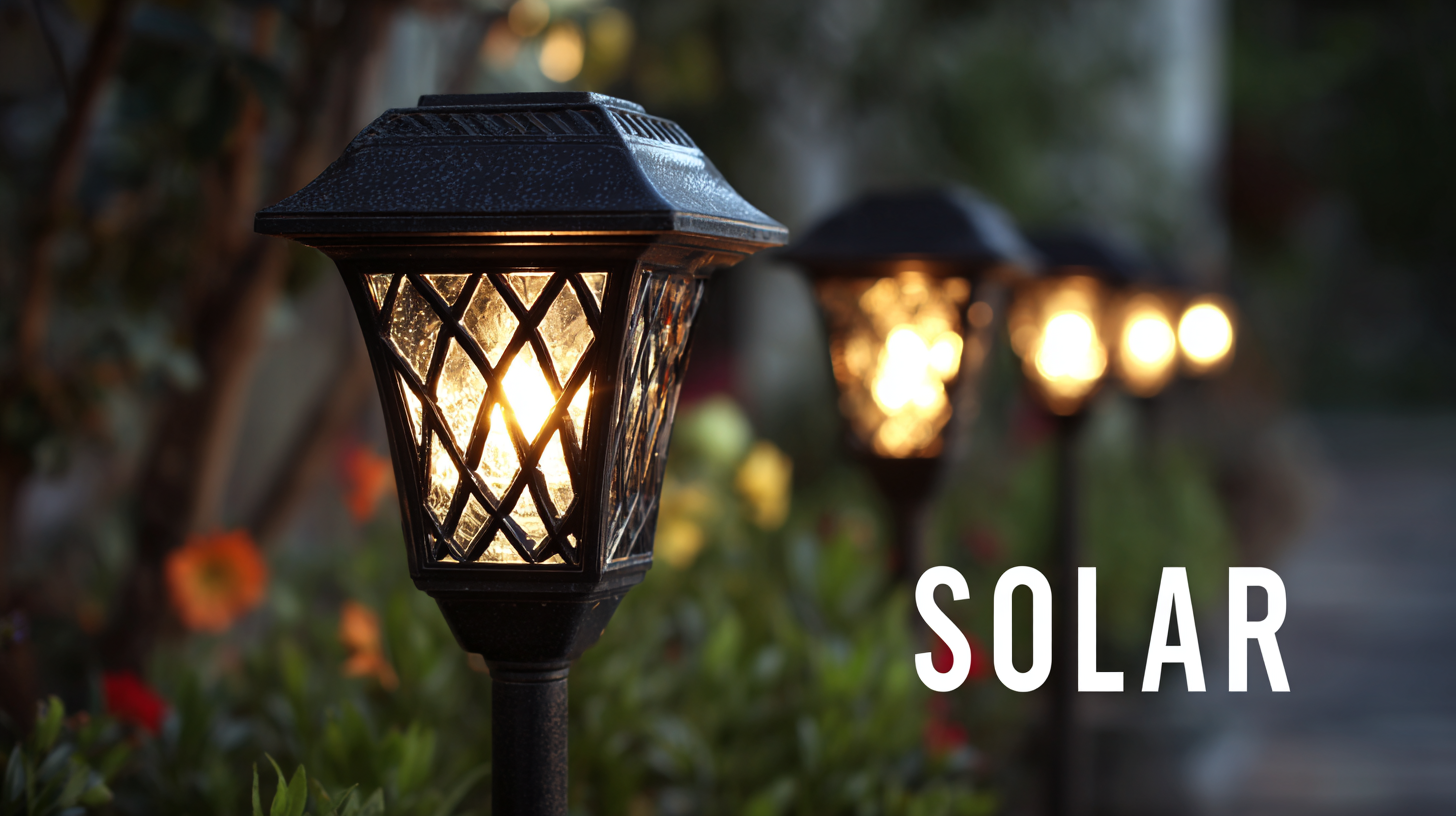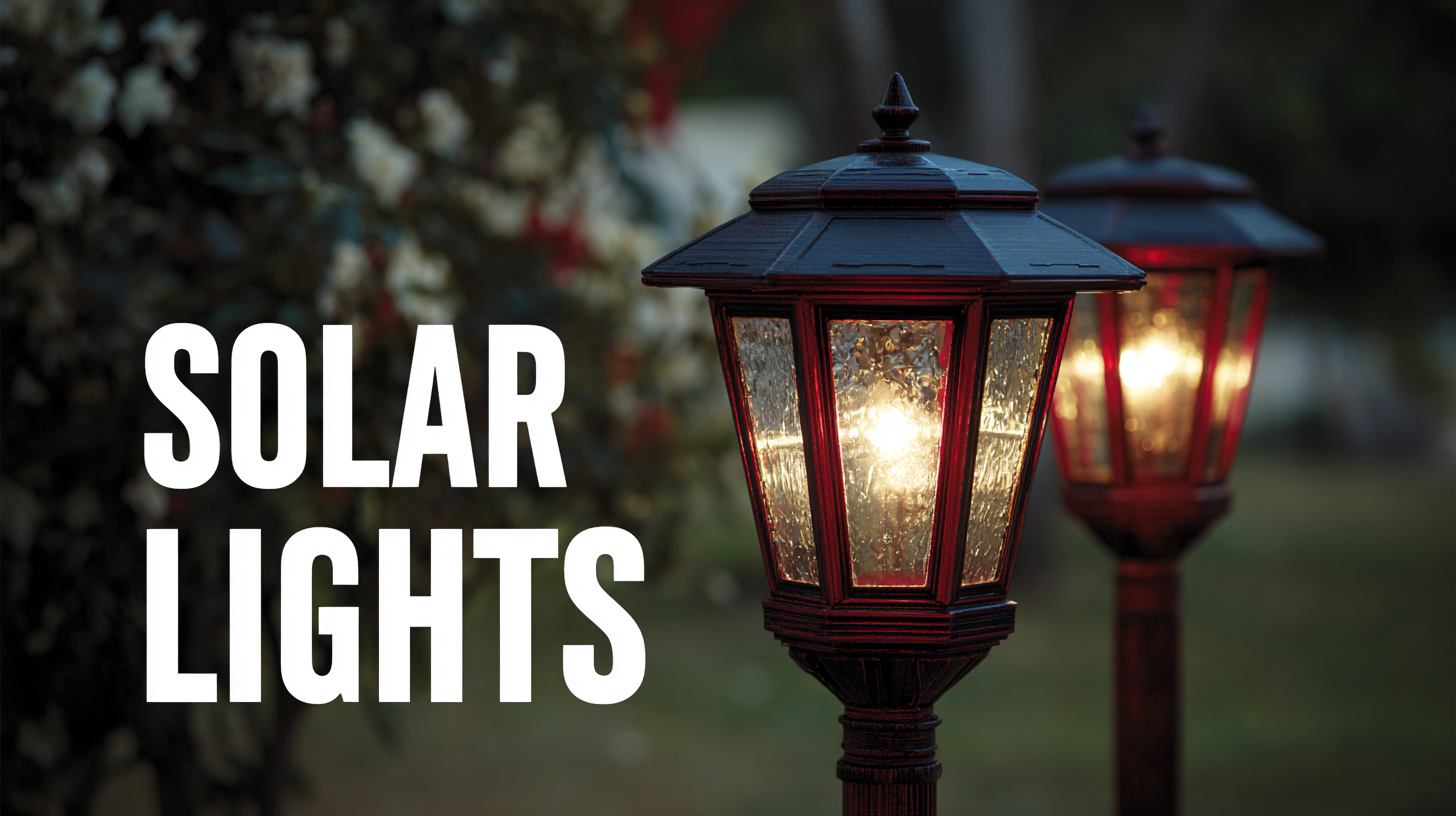The Ultimate Guide to Choosing the Best Solar Lights for Outdoor Use
As outdoor lighting continues to evolve, solar lights outdoor have emerged as a popular and sustainable choice for homeowners seeking efficient and eco-friendly illumination solutions. According to a recent report by Mordor Intelligence, the global solar lighting market is projected to grow at a CAGR of 25.4% from 2021 to 2026, reflecting the increasing demand for renewable energy sources. This surge is driven by several factors, including rising energy costs, environmental concerns, and advancements in solar technology, which have significantly improved the efficiency and affordability of solar lighting options. Consequently, choosing the right solar lights outdoor can be a pivotal decision for enhancing garden aesthetics, increasing safety, and reducing energy consumption. In this ultimate guide, we will explore key considerations for selecting high-quality solar lights outdoor, along with insights into finding reliable suppliers who can meet your lighting needs.

Key Factors to Consider When Comparing Solar Lights for Outdoor Use
When comparing solar lights for outdoor use, several key factors emerge that can significantly influence your decision.
First and foremost, luminosity is crucial. According to a report from
the Solar Energy Industries Association (SEIA),
effective solar lights should emit at least 100 lumens per watt. This baseline luminosity ensures
adequate brightness for pathways, gardens, or security purposes. Additionally, consider the color temperature of
the lights; warmer tones (2700K-3000K) are typically preferred for residential areas, while cooler tones offer a more
modern aesthetic suitable for contemporary outdoor spaces.
Battery performance is another essential factor. A study by the U.S. Department
of Energy highlighted that high-quality solar lights should feature lithium-ion batteries,
which provide better efficiency and longer life spans compared to traditional nickel-cadmium options. Look for models
that offer at least 6-8 hours of nighttime illumination after a full charge during the day. Furthermore,
an IP rating—specifically, an IP65 rating—indicates that
the lights are both dust-tight and can withstand water jets, making them ideal for diverse weather conditions.
By understanding these key elements, you can select solar lights that offer both functionality
and durability for your outdoor environment.
Different Types of Solar Lights: Which is Best for Your Needs?
When it comes to enhancing outdoor spaces, solar lights offer a sustainable and cost-effective solution. Among the diverse types of solar lights available, each serves a unique purpose tailored to various needs. For instance, solar path lights are perfect for illuminating walkways and garden borders, ensuring safety and adding an aesthetic appeal to your landscape. They typically feature a stake design that is easy to install, and with numerous styles to choose from, they can complement any outdoor décor.

Additionally, solar string lights can create a cozy atmosphere for outdoor gatherings or parties, allowing you to effortlessly brighten up patios or pergolas. With various options to consider, understanding the specific functions and advantages of each type will help you choose the best solar lights for your outdoor needs.
Durability and Weather Resistance: Ensuring Longevity of Solar Lights
When selecting solar lights for outdoor use,
durability and weather resistance are crucial factors to consider. Outdoor solar lights are constantly exposed to the elements,
and choosing high-quality materials can significantly enhance their longevity. Look for lights made from robust materials
such as stainless steel or high-grade plastics,
which can withstand the test of time against harsh weather conditions.
Tip: Before making a purchase, check for an IP rating,
which indicates the level of protection against dust and moisture. An IP65 rating or higher
is ideal for outdoor solar lights, ensuring they are waterproof and can endure heavy rain or snow. Additionally,
consider lights with a transparent lens made from shatter-resistant materials
to avoid damage from falling branches or hail.
Moreover, ensure the solar panel is designed to resist corrosion and can effectively capture sunlight even during overcast skies.
A solar light with adjustable panels can be beneficial as well, allowing you to optimize sunlight exposure throughout the day.
Tip: Regularly clean the solar panels to remove any debris or dirt that
might block sunlight, thereby enhancing the lights’ efficiency and lifespan. By prioritizing durability and weather resistance,
you can confidently illuminate your outdoor spaces with solar lights that will last for years to come.
Brightness and Efficiency: Understanding Lumens and Battery Life
When selecting solar lights for outdoor use, understanding brightness measured in lumens is crucial. Lumens indicate the total light output from a fixture, helping you evaluate how well a solar light can illuminate your space. For outdoor areas, especially darker environments, higher lumens are generally preferred. A product offering 100 lumens may suffice for pathway lighting, but for larger areas like gardens or driveways, look for lights that emit 300 lumens or more to ensure adequate visibility.
Another key factor to consider is battery life, which directly impacts the efficiency of solar lights. As recent advancements in lighting technology emphasize the importance of long-lasting battery performance, many solar lights now feature enhanced battery systems that can provide illumination for extended periods. This is especially useful during longer summer nights or in winter when daylight hours are limited. When researching options, look for lights that advertise not only high lumen output but also superior battery longevity, ensuring your outdoor spaces remain bright and secure throughout the night.

Price vs. Quality: Finding the Best Value in Solar Outdoor Lighting
When it comes to selecting solar lights for outdoor use, striking a balance between price and quality is essential for maximizing the value of your investment. It’s tempting to choose the cheapest option, but often, these bargain buys fall short in durability and performance. Solar lights that are well-constructed from high-quality materials are more likely to withstand the elements and function efficiently, ensuring you get the most out of your outdoor lighting.
Tip: Look for solar lights that offer adjustable brightness settings. This feature not only enhances the ambiance of your outdoor space but also allows you to save energy and extend the lifespan of your lights, making it a more economical choice in the long run.
Another key consideration is the type of solar panel used in the lights. Monocrystalline panels tend to be more efficient than their polycrystalline counterparts, leading to better performance and longer usage times after sundown. Investing a bit more upfront can often result in noticeable savings over time with reduced replacement costs.
Tip: Read customer reviews and check for warranties when shopping. Authentic feedback can provide insight into the performance and longevity of the lights, helping you make an informed decision.
The Ultimate Guide to Choosing the Best Solar Lights for Outdoor Use
| Type of Solar Light | Brightness (Lumens) | Battery Capacity (mAh) | Runtime (Hours) | Price (USD) | Quality Rating (1-5) |
|---|---|---|---|---|---|
| Path Light | 150 | 2000 | 8 | 45 | 4 |
| Flood Light | 300 | 4000 | 10 | 70 | 5 |
| String Light | 100 | 1000 | 6 | 25 | 3 |
| Wall Light | 200 | 3000 | 12 | 50 | 4 |
| Spotlight | 250 | 3500 | 9 | 60 | 4.5 |